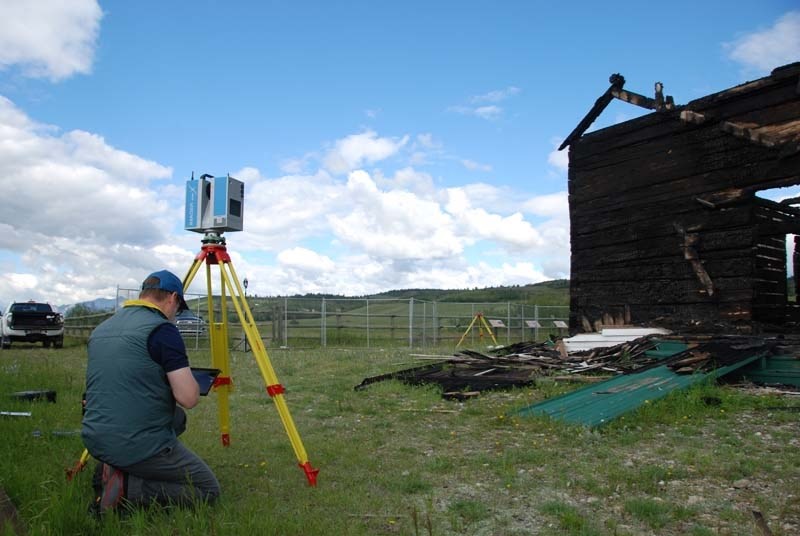McDougall Memorial United Church by pcdawson on Sketchfab McDougall Memorial United Church by pcdawson on Sketchfab State-of-the-art computer technology is being used to breathe new life into the fire-ravaged spot where the historic McDougall Memoria
State-of-the-art computer technology is being used to breathe new life into the fire-ravaged spot where the historic McDougall Memorial United Church once stood.
“We probably shouldn't talk about it in the past tense … it still exists, but it exists in another form, ” said University of Calgary archeologist Dr. Peter Dawson of the burned-out structure near Morley. “I think we owe it to future generations to digitally preserve these structures.
“We can learn a lot from what has happened - something positive can come of what happened. That's really important. ”
Police continue to investigate the arson that torched the 142-year-old church, one of Alberta's oldest heritage buildings, in May.
Shortly after the fire, the province of Alberta contacted Dawson and his team of graduate students at the university's department of anthropology and archaeology - who work to digitally preserve at-risk heritage sites around the country - in hopes they could capture what was left of the church.
“The idea basically was to digitally capture it and to essentially find ways to use the digital data to study that aspect of the building, ” said Dawson, adding detailed computer models of historical structures and their remains are often used for education, public outreach, or to rebuild part or all of buildings that have been destroyed. “There's a lot of useful information that can be extracted from these 3D images. ”
Dawson then connected with the McDougall Stoney Mission Society for access, and in June, he and a graduate student headed out west of Cochrane with a drone and a Z+F 5010X 3D laser scanner.
The machine works by spinning millions of beams of light 360 degrees horizontally and vertically and measuring the time it takes for those beams to strike an object and return back. Similar technology has been used for years by civil engineers to examine erosion, monitor construction projects and model drainage.
At McDougall Church, the lasers recorded information from 10 different locations around the structure, and the drone worked from above.
The process created a meticulously detailed computer model with exact measurements of everything within a 100-metre radius of the building in just three hours.
“What you end up with is a … cloud of laser points that define the 3D shape of the object, ” said Dawson. “It's relatively quick - you can capture a lot of detailed information really quickly. ”
Dawson and his team have inputted all the information from their scans and are already putting it to good use: McDougall Stoney Mission Society board members have asked for measurements so they can possibly build a protective wall around the church remains to protect it over the winter.
“Right then and there it makes me feel good that they're actually using this data and it's only been a few weeks since we processed it, ” Dawson said.
Mike Geier, whose family has supported the McDougall Church site for decades, said having literally a new perspective on the tragedy has helped him and others to start moving forward and think about how to continue to preserve the site.
“It's like a grieving process, ” said Geier. “(But) when you have a moment like this, it acts as a bit of a catalyst … this is the history now. ”
Dawson agreed, saying those who love the historical structure can't change the fact it's gone - but the technology can offer new options so that the devastating fire just becomes part of the ongoing McDougall Church story.
“The next best thing is to digitally preserve it and them place it in an archive so people can access it in the future, ” he said. “We tend to value things that are extremely old … in reality, it's the significance of the heritage site and the stories that it's tied to.
“People have relationships to places … and that's what makes those places significant. ”
